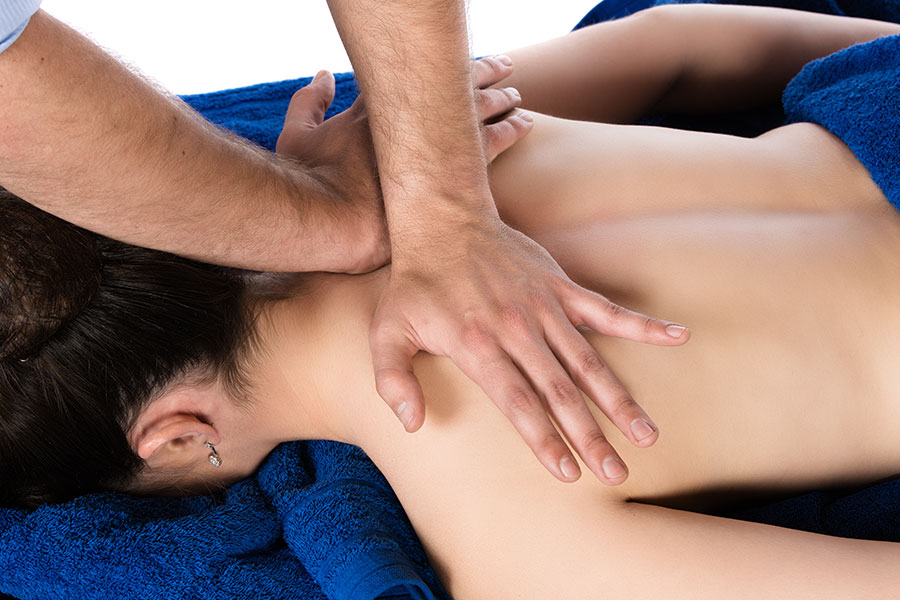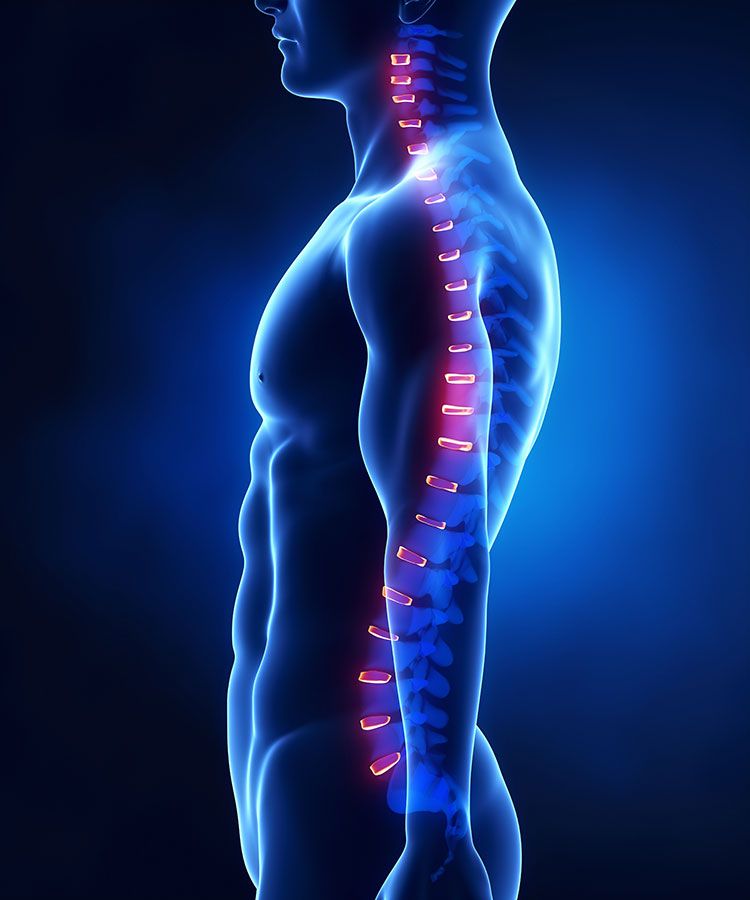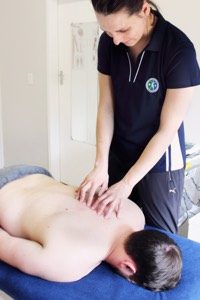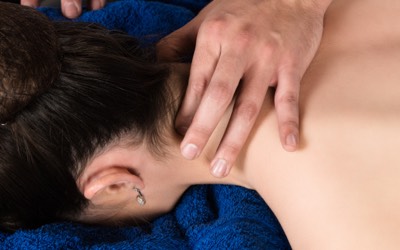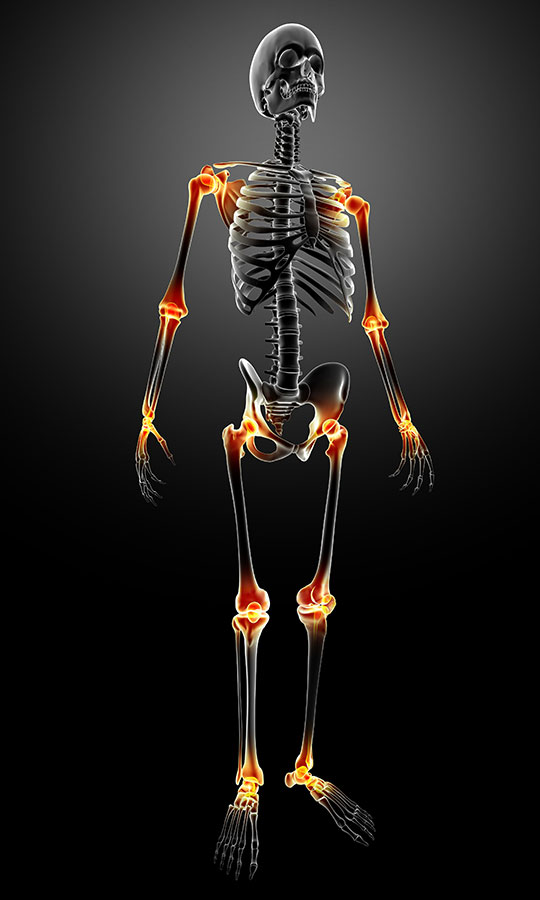You might have heard of a term called joint mobilization or manipulation. If you’ve had physiotherapy treatment in the past, you might even have felt what it feels like. Maybe you feel a bit apprehensive to have your joint ‘mobilized’, especially when it’s really sore. However, you don’t need to be afraid at all. Usually, it is a firm, but comfortable movement. This article will explain to you exactly what you can expect from joint mobilizations.
What exactly is joint mobilization?
The word mobilization means: to make something movable or capable of movement. In other words, joint mobilization is a treatment that involves movement of a joint with the aim of improving its capability to move.
Physiological movement
When you move any part of your body, it is called physiological movement. Muscles and joints allow you to do these movements. This enables you to do everyday things like reaching up into the cupboard or putting on clothes. Every single joint in your body has certain physiological movements that it should be able to do. For example: your knee should be able to do flexion (bending) and extension (straightening).
Accessory movement
All our joints also allow accessory (extra) movements. These are movements which you cannot do on your own. Let’s use the knee as an example again. Your knee joint can do more than just bend and straighten. It also allows twisting or sliding. However, you won’t be able to do these on your own. If someone, like a physiotherapist, took your knee joint in their hands and did a twisting movement, your knee would allow it. That’s where joint mobilisation comes in. It is the careful use of skilled, graded forces to move your joint in a direction that you are not always able to move into yourself.
Both physiological movement and accessory movement is necessary for each joint to have a full and pain-free range of motion.
Why do we use joint mobilizations?
When a joint feels stiff, often we try to relieve it by stretching, but unfortunately that mostly has an effect on surrounding muscles and ligaments. Whereas, joint mobilizations are specific to the structure of the joint itself.
It is a very effective technique that physiotherapists use to encourage normal mobility of joints, soft tissue and nerves. Especially when stiffness is dominant.
Healing Effects of Laser
- Pain relief
- Improved muscle flexibility
- Decreased joint stiffness
- Less pain from muscle spasms
- Movement with more ease
- Increased muscle activation and strength
- Acceleration of healing
- Improved circulation and joint fluid uptake
- Assists with normal nerve gliding movement
“Any stiff or painful joint can benefit from joint mobilization”
How is a joint mobilization done?
It is a hands-on technique that will require the physio to hold and move your joint in a specific way. Physiotherapists use joint mobilizations as part of their treatment, in conjunction with other treatment techniques. The aim of your treatment should not only be pain relief, it should look at the root of the problem and how you can improve as a whole. That is why you shouldn’t expect only joint mobilizations for treatment. The mobilizations itself is done in anything between 30 seconds and a few minutes, depending on the size and depth of the structure being treated. This time will be incorporated into the overall time of your treatment session.
Our physiotherapists have lots of experience to know how your joints should move and are all qualified to provide joint mobilizations. They can adequately determine if joint mobilizations will benefit you and effectively incorporate it into your treatment plan. Mostly, it is used on joints, but it can improve muscle and nerve mobility as well.
Different types of application
There are two main schools of thought when it comes to joint mobilisation: Maitland and Mulligan.
Maitland mobilisations: Also known as the Maitland technique, uses both passive and accessory joint mobilisations to treat mechanical pain and stiffness. It is a passive technique, meaning you won’t have to move a muscle as someone skilled in the technique will be doing it for you. These mobilisations are graded differently according to the amount of pressure that is applied.
Mulligan techniques use the same type of mobilisations, but the patient always does the movement together with the mobilisation.
Both are very effective in the treatment of joint pain and stiffness.
Joint mobilisations are graded as follows:
- I – small amplitude movement at the beginning of the available range of motion
- II – large amplitude movement within the available range of motion
- III – large amplitude movement that reaches the end of the range of motion
- IV – small amplitude movement at the very end of the range of motion
- V – high velocity thrust of small amplitude at the end of the available range
A grade V mobilisation is also called a manipulation, meaning, it is a small movement at the end of the joint’s range, that is done quickly and powerfully without your control. Thus, it can be classified as an extreme joint mobilisation.
What kind of changes will I be able to feel?
Around each joint in your body, there are different nerve endings that pick up movement, pain, pressure, and temperature. These are called mechanoreceptors and nociceptors. These nerve endings connect to nerves, which connects to your spinal cord, which in turn connects to your brain.
Pain gate theory
When a joint mobilization is applied, the mechanoreceptors are stimulated and will send signals through your nerves and spinal cord, all the way up to your brain. The same happens with the feeling of pain. This time, the nociceptors are stimulated, and they send signals up the same pathway to your brain. On the way up, these signals travel through different checkpoints, where only the most important signals continue on. Now, imagine both the pain signals and joint mobilization (movement) signals travel up this pathway at the same time. Less pain signals will be able to pass through the checkpoints, meaning you will feel less pain. This is called the pain gate control theory. And this is how a joint mobilization can relieve your symptoms.
What is happening on a deeper cellular level with a joint mobilization?
If a joint is swollen or stiff, there is a build-up of fluid around or inside it. Synovial fluid is a type of fluid found inside joints that provides nourishment to the cartilage and encourages healing. With normal joint movement, this fluid can circulate within the joint and the cartilage can absorb it. However, if there is a build up of this fluid, it causes pain due to the increased pressure. The extra fluid build-up can prevent normal cellular healing, because dead cells can’t be carried away or white blood cells can’t reach the area.
It is a known fact that circulation improves with movement. So, with joint mobilizations, the exchange of fluid on a cellular level can happen faster and your body can absorb the extra fluid again.
The changes you’ll be able to feel afterwards:
- Less pain leads to decreased muscle guarding and spasm
- The joint mobilization itself leads to decreased joint hypomobility and generation of heat
- Increased elasticity in the joint capsule
- Mechanical distension leads to a feeling of a comfortable stretch
- Improved circulation due to tissue movement
Joint mobilization feels like:
Your physiotherapist will ask you to expose the area of your body that needs to be treated. Then you’ll feel a comfortable, but strong pressure from his or her hands, directly to affected joint. Joint mobilizations are supposed to be performed with as little pain as possible and you as relaxed as possible. A joint mobilization is applied only to one joint, but more often than not, it is applied to more than one joint. It is always combined with certain massage or soft tissue techniques, to improve your overall pain and mobility.
After a while, your physiotherapist will ask you to test the affected movement again to compare what you are feeling. You’ll feel an instant change and improvement. At most, a joint mobilization can feel stiff, limited or slightly sore. But, give your physiotherapist feedback about what you are feeling and it helps to grade your discomfort.
Our physiotherapists are all skilled and trained to make it as painless as possible, while still achieving our end goal.
How long does Joint mobilizations take?
Treatment times per point are usually between 30 seconds to a minute. As little as one point may be treated or as many as 10 to 15 different points in larger areas.
However, laser light therapy will only be a part of your treatment session. Often, your physiotherapist will combine it with soft tissue massage or stretching to have a bigger and more prolonged effect. You might not even notice your therapist switching between techniques. Joint mobilizations, massage, nerve glides and graded exercises are often used in combination to treat the structures surrounding the target joint.
Treatment times per technique are usually between 30 seconds to a few minutes. It all depends on the type of technique used and if it needs to be used in different areas e.g. on different levels of your spine. It can also be repeated with a higher grade. More than one joint can be treated this way and often the joint mobilizations are done a few times in different positions during your treatment session.
Feel free to ask more questions during your treatment session.
How many times should I get joint mobilizations?
Usually, you can feel the effect of the joint mobilizations after the first session, however it works best if it can be administered repeatedly for a few weeks. It can be used in each treatment session.
Your physiotherapist will discuss a treatment plan with you, after which you will have an idea of how long it will take for your condition to improve and how often you will need treatment.
What can I do at home to prolong the effect of joint mobilizations?
Unfortunately, the effect of joint mobilizations might only be temporary, if the real cause of your problem isn’t addressed. At Well Health Pro, your physiotherapist will look at the bigger picture and discuss the possible causes of your pain with you. With physiotherapy treatment, it is important to comply to the whole treatment plan, including rehabilitation and conditioning. This is the best way to get long-lasting pain relief. Looking back, you won’t be able to measure only the effect of the joint mobilizations, but you’ll be able to see overall improvement in your condition.
Remember, you see your physiotherapist for an hour at a time. A big part of your improvement will take place in the hours you spend away from the physiotherapist. There are a few things you can do at home to make sure your treatment is effective:
- Do your prescribed home exercises and stretches
- Make sure you get good quality sleep and nutrition as this also helps with recovery
- If possible, avoid the use of anti-inflammatory medication, as it delays healing
- Discuss your use of medication with your physiotherapist
- Your physiotherapist will advise you on whether you should gym/exercise or not
- Apply heat / ice to help with pain
Cost of joint mobilizations
There are certain medical aid rates for joint mobilizations as a treatment, but they are always used as part of a complete treatment consultation. So, you will never be paying for only joint mobilizations.
This treatment in isolation will not fix your problem. It’s the complete treatment package that shows the real improvement.
Medical Aid Code – 401 or 405
The medical aid codes used for joint mobilizations and manipulations are:
- 401 – Used for mobilizations done on your spine. This includes your back, upper back and neck
- 405 – Used for mobilizations done on any other joint in your body. They are called peripheral joint mobilizations.
You will see a 401 or 405 code (or both) on your statement and the same codes will be sent in to your medical aid, stating that joint mobilizations was used during your treatment.
Most good medical aids offer re-imbursement for joint mobilizations.
Does it make a difference to have an experienced physiotherapist apply joint mobilizations?
It will definitely make a difference to have an experienced therapist that does joint mobilizations. A therapist with the necessary skill will be able to know when and where to apply it and how normal joint movement should feel.
Our physiotherapists have the necessary knowledge about your body’s anatomy and understands different painful conditions and injuries. They have plenty of experience in treating pain and know exactly how to use joint mobilizations as part of your treatment.
Other questions about joint mobilizations:
